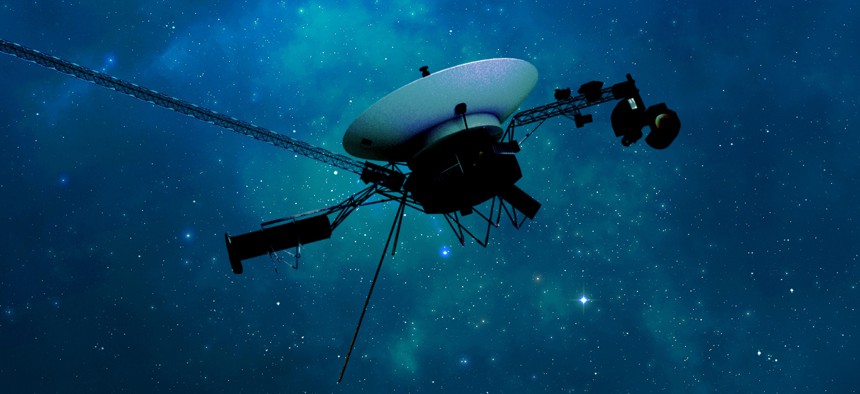NASA delivers Voyager software update across 15 billion miles of space

NASA/JPL-Caltech
Scientists and engineers with the space agency were able to successfully repair an issue in one of the probe’s onboard computers from over 15 billion miles away.
A NASA spacecraft launched almost five decades ago is once again sending data back to scientists after going dark last year, the space agency reported this week.
In an April 22 press release, NASA announced that a team of experts had remotely repaired a computer problem in Voyager 1, a probe launched in 1977 to study planets and moons in the outer reaches of our solar system that is now more than 15 billion miles from Earth.
Voyager 1 and its twin, Voyager 2, are the only human-made craft to fly into interstellar space. Originally designed to last for five years, both spacecraft have continued to send collected information back to Earth for more than 46 years — until five months ago.
NASA lost contact with Voyager 1 in November 2023 after the spacecraft stopped transmitting readable data. Although the incoming information was corrupted, the agency said the probe was still able to receive commands from mission control and was otherwise operating normally.
Voyager 1’s engineering team traced the problem back to a malfunctioning chip in the probe’s flight data subsystem, one of the spacecraft’s three onboard computers. The chip issue affected code in Voyager 1’s flight data subsystem, which the agency said “rendered the science and engineering data unusable.”
Engineers were unable to remotely repair the chip, so they created a plan to spread the impacted code across unaffected portions of the flight data subsystem. Once the coding fix for the probe’s engineering data was finished, the team had to wait 22.5 hours for the signal to reach the probe and then another 22.5 hours for the signal to return to Earth.
On April 20, NASA said Voyager 1 once again began transmitting data about the health and status of its systems. The agency said it plans to “relocate and adjust the other affected portions” of the flight data subsystem in the coming weeks, including “the portions that will start returning science data.”



